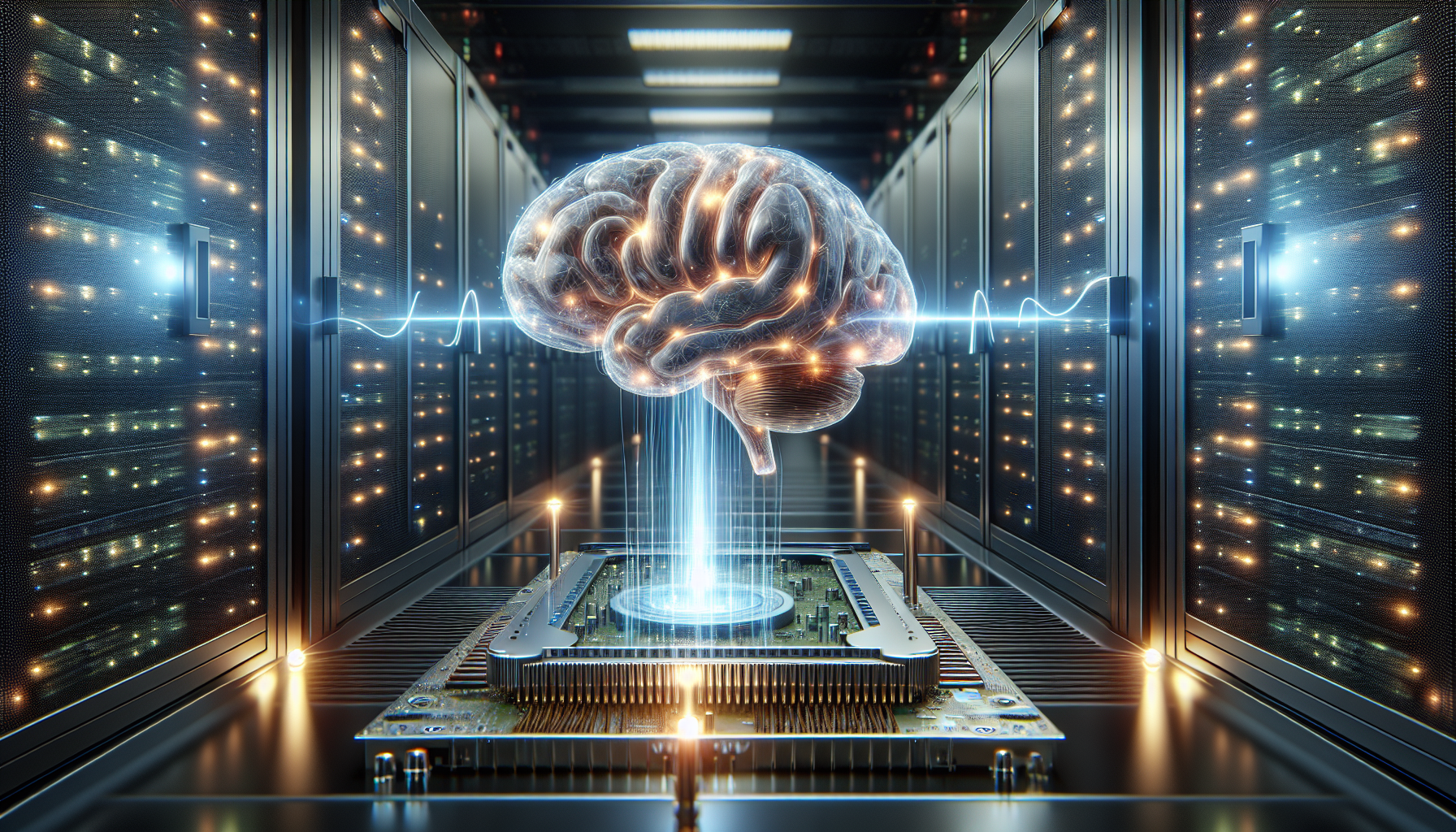
Your Next Computer Might Be Powered by a Human Brain
Picture the heart of your computer. You probably see a silicon chip, a marvel of engineering packed with billions of transistors, humming away inside a server rack in a massive data center. For decades, this has been the undisputed engine of digital progress. But what if the next leap in computing power wasn’t etched in silicon, but grown in a petri dish?
It sounds like pure science fiction, but according to a recent report from the BBC, scientists are turning this radical idea into a functional reality. They are successfully growing “mini-brains”—or brain organoids—from human cells and using them to perform computing tasks. This isn’t just a quirky experiment; it’s a potential paradigm shift that could redefine everything we know about artificial intelligence, energy consumption, and the very nature of computation.
Forget software. Welcome to the dawn of “wetware.”
The Silicon Ceiling: Why We Need a New Approach
For years, the tech world has been guided by Moore’s Law, the observation that the number of transistors on a microchip doubles about every two years. This relentless march of progress has given us everything from smartphones to the sprawling cloud infrastructure that powers our digital lives. But that march is slowing down. We’re approaching the physical limits of how small we can make transistors.
At the same time, the demands we’re placing on our hardware are exploding. Training a single large-scale AI model, like the ones behind advanced chatbots or image generators, can consume an astonishing amount of electricity—sometimes as much as a small town. As our ambition for more powerful machine learning and widespread automation grows, the energy and financial costs are becoming unsustainable.
The human brain, by contrast, is a masterpiece of efficiency. It performs tasks far more complex than any current AI, all while running on about 20 watts of power—less than a standard lightbulb. What if, instead of trying to build hardware that *mimics* the brain, we could just… use the brain’s own hardware?
Inside the Lab: How “DishBrain” Works
This is precisely the question researchers at startups like Cortical Labs are answering. As profiled by the BBC, their team is at the forefront of this biocomputing innovation.
Here’s a simplified look at their groundbreaking process:
- Growing the Organoid: Scientists take human stem cells—often derived from skin or blood cells—and coax them in a lab to develop into brain cells. Over several weeks, these cells self-organize into a three-dimensional structure about the size of a pinhead, forming a mini-brain organoid containing a network of around a million neurons.
- Creating the Interface: This mini-brain is placed onto a high-density microarray of electrodes. This grid acts as a two-way communication channel, allowing scientists to send electrical signals *into* the neural network and read the signals the neurons fire back in response.
- Learning Through Stimuli: In their most famous experiment, the researchers taught an organoid to play a version of the classic video game *Pong*. They sent signals representing the ball’s position, and the organoid learned to control the paddle by firing its neurons. When it successfully hit the ball, it received a predictable, orderly electrical pulse. When it missed, it was hit with a chaotic, unpredictable signal.
Remarkably, within minutes, the organoid network began to adapt its behavior to receive more of the “rewarding” predictable signals. It was learning. It wasn’t running software or executing lines of code; it was physically reconfiguring its own neural pathways to better understand and interact with its environment. This is biological, intrinsic learning—a fundamentally different process from the mathematical optimization that drives today’s machine learning algorithms.
The Implications: A Tsunami of Disruption for Tech
If this technology matures, its impact will be felt across the entire tech landscape, from fledgling startups to enterprise-level SaaS providers.
A New Frontier for Artificial Intelligence
Current AI is brilliant at specific tasks but lacks the general, flexible intelligence of a biological brain. Biocomputers could bridge that gap. Imagine an AI that doesn’t just process data but genuinely understands context, learns from a handful of examples instead of millions, and solves problems with intuitive leaps rather


